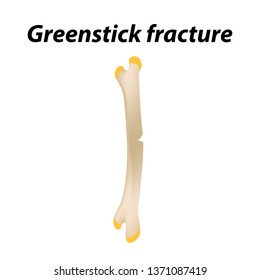The Relationship Between Position And Back Pain: Methods For Keeping Appropriate Alignment During The Day
The Relationship Between Position And Back Pain: Methods For Keeping Appropriate Alignment During The Day
Blog Article
Staff Writer-Kragh Patton
Preserving correct stance isn't nearly sitting up right; it's about aligning your body in a manner that supports your spinal column and minimizes the danger of neck and back pain. The way you sit, stand, and relocate throughout the day can substantially impact your back wellness. However exactly how specifically can you ensure great positioning consistently, even throughout active days loaded with various activities? Allow's dig deeper right into the subtle yet impactful modifications you can make to your day-to-day regimen to keep your back happy and healthy.
Relevance of Appropriate Position
Proper posture is vital in maintaining a healthy back and stopping pain. When you sit or stand with good pose, your back remains in positioning, minimizing pressure on your muscle mass, tendons, and joints. This alignment permits the body to disperse weight equally, stopping extreme tension on certain locations that can bring about pain and pain. By keeping your spinal column correctly straightened, you can likewise boost your breathing and food digestion, as slouching can compress body organs and limit their capability.
Furthermore, maintaining click here can improve your total look and confidence. When you stand tall with your shoulders back and head held high, you radiate self-confidence and show up even more approachable. Good stance can also make you really feel much more invigorated and sharp, as it promotes correct blood circulation and allows your muscles to function successfully.
Integrating proper position into your daily regimen, whether sitting at a desk, walking, or working out, is essential for avoiding back pain and advertising overall well-being. Remember, a little change in how you hold on your own can make a considerable difference in just how you feel and operate throughout the day.
Common Postural Mistakes
When it involves maintaining good posture, lots of individuals unknowingly make typical errors that can contribute to pain in the back and pain. One of one of the most prevalent errors is slouching or hunching over while sitting or standing. This placement places extreme stress on the spinal column and can bring about muscle mass imbalances and discomfort in the long run.
Another usual mistake is overarching the reduced back, which can flatten the all-natural curve of the spine and cause pain. Furthermore, crossing https://chiropractoropenlate39401.howeweb.com/30843400/looking-into-the-correlation-between-chiropractic-care-care-and-emotional-health while sitting may feel comfy, however it can develop an inequality in the hips and pelvis, causing postural issues.
Utilizing a cushion that's as well soft or as well strong while sleeping can additionally affect your alignment and add to pain in the back. Last but not least, constantly craning your neck to take a look at displays or readjusting your position regularly can stress the neck and shoulders. Bearing in mind these common postural mistakes can help you preserve better placement and reduce the risk of pain in the back.
Tips for Correcting Alignment
To boost your alignment and reduce pain in the back, it's necessary to focus on making small changes throughout your everyday regimen. Start by bearing in mind your posture. When sitting, ensure your feet are level on the floor, your back is straight, and your shoulders are unwinded. Avoid slouching or leaning to one side. Use ergonomic chairs or cushions to support your reduced back.
When standing, distribute your weight uniformly on both feet, keep your knees a little curved, and embed your pelvis. Involve your core muscles to sustain your spinal column. Take breaks to stretch and walk around if you have an inactive task. Incorporate workouts that reinforce your core and back muscles, such as planks or bridges.
While sleeping, use a cushion that supports the all-natural contour of your neck to keep appropriate spinal placement. Stay clear of sleeping on your belly, as it can strain your neck and back. By being mindful of these ideas and making small changes, you can progressively correct your positioning and ease pain in the back.
Verdict
Bear in mind, maintaining good stance is vital to avoid neck and back pain and promoting spinal health and wellness. By being mindful of your positioning, distributing weight uniformly, and engaging your core muscular tissues, you can lower strain on your back and minimize the threat of discomfort and injury. Integrate ergonomic assistance, take routine breaks to extend, and enhance your core and back muscles to preserve proper placement throughout the day. Your back will certainly thank you for it!
